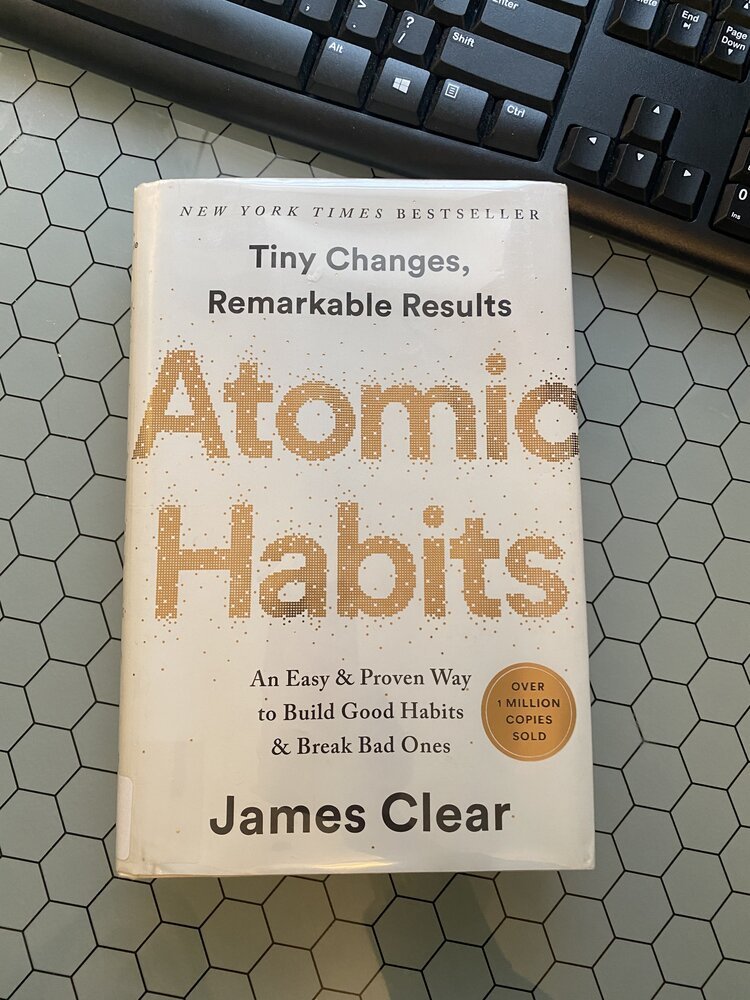Book Summary: Atomic Habits, By James Clear
This book has gained mass appeal in the circles that I run in (that would be the circles of self-development nerds). It’s easy to see why. Not only is it an enjoyable and fast read, it is packed with actionable ideas.
QUICK SUMMARY
The word atomic is nodding to foundational points of the book; that habits are a source of immense energy and power, they’re part of a larger system, and that you should start with an extremely small and irreducible unit. The idea is that a 1% change made repeatedly will lead to big results. Clear’s framework is an integrated model of cognitive and behavioral sciences, accounting for both the influence of external stimuli and internal emotions on our habits. The book is structured around Clear’s Four Laws of Behavior change, a set of rules to build better habits:
Make it obvious
Make it attractive
Make it easy
Make it satisfying
IDEAS THAT RESONATED
Sluggish days maintain the compound gains you accrued from previous days. [page 201]
While I’ve heard this concept before, Clear gives a mathematical example that brought this idea to life in a way that made it understandable and really undeniable. Here it is: If you have $100, a 50% gain gets you to $150. You only need a 33% loss before you are back to $100 and if you have a 50% loss then you only have $75. For any runner who has struggled to power through a lead-legged slog of a run, it will comfort you to know that there is meaningful maintenance value to that workout.
A commitment device is a choice you make in the present that controls your actions in the future. [page 170]
Take advantage when you’re in the right frame of mind, before temptation is in front of you, to set clear rules and boundaries for your habits. This finally gave me a name for a strategy I’ve used instinctively for years. A commitment device I’ve used successfully in the past is “I only eat dessert on the days that I have worked out.” Admittedly this tends to increase my frequency of working out more than it reduces my intake of dessert, but the outcome is net positive. My newest commitment device is “If I get hungry after dinner I will have a cup of tea.” Deciding in advance how you will behave is easier than trying to decide in a vulnerable moment.
There is a conventional association of unhealthy behavior as a moral weakness. [page 92]
This was the briefest of mentions in the book, but a really important idea. It’s one that derails even the best intentions through a spiral of shame and negative self talk. There is a prevalent narrative that with the right discipline and self-control we should be able to enforce healthy habits. When we fail to keep a habit, we label our actions as bad and we also label ourselves as bad. Not unsurprisingly this is demotivating. Clear makes clear in this book that there are many factors that impact the ability to keep habits. The person you admire who seems to have all the self-discipline in the world… they aren’t a better person than you. They just have a different set of factors and systems that lead to the habit being obvious, attractive, easy, and satisfying.
WHAT TO READ NEXT
Better than Before, by Gretchen Rubin
This book on habits is similarly easy to consume and provides a wider variety strategies to try. This book also introduces a very helpful framework, called the four tendencies, to understand how you (and others) are motivated by external and internal expectations.

